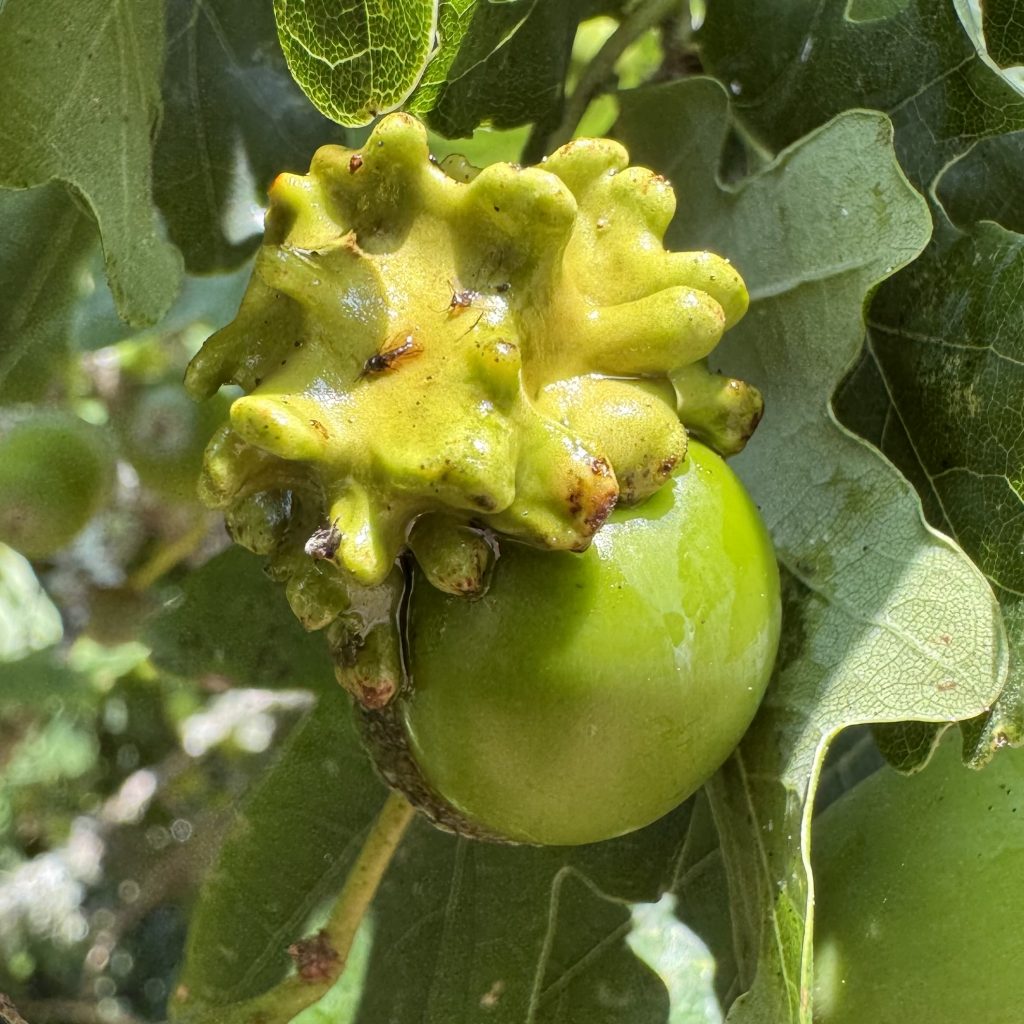
Knopper Galls are found on the acorns of Pedunculate Oaks, and are also reliant on the Turkey Oak during their life cycle. The knobbly growths are produced by the Knopper Gall Wasp.
Photo: Amanda Scott
Scientific name: Andricus quercuscalicis (this is the name of the parasitic gall-wasp that induces the galls)
What to look for:
• Appearance: Knopper Galls are knobbly growths (c. 2cm) on acorns, initially green, then red and turning brown and woody.
• Where: On Pedunculate Oaks, with another generation on Turkey Oaks.
• When: Knopper Galls appear on the across of Pedunculate Oaks in autumn.
• Similar to: Knopper Galls are distinctive, so unlikely to be confused with other typles of oak galls.
We are used to thinking of biodiversity as applying to whole landscapes and wider habitats, but it can just as equally apply to a metre-by-metre plot, or a single tree. One oak tree, for example, hosts far more creatures and plants than a large field in which a single crop is growing. Our native oak species have been with us since the last ice age, and since then have developed symbiotic and parasitic relationships with hundreds of other species. It is therefore not surprising that, of the 90 or so gall wasp species found in Britain, 42 are parasitic on oaks.
Like most oak gall wasps, the knopper gall wasp has both sexual and parthenogenetic (only-female) generations. In spring, female wasp larvae emerge from the Knopper Galls and then, as adults, fly off to find a Turkey Oak (introduced to the UK in the 1730s), where they lay eggs on the male catkins; these, in turn, through parthenogenesis, develop into the next sexual generation that will fly off to find a Pedunculate Oak.
Knopper Gall wasps are not native to the UK, arriving first in the 1960s. They have since spread as far north as Scotland. There was once concern that their population spread would affect the fecundity of our native oaks, but that is now not thought to be the case.

Did you know…?
…Galls are chemically induced to form by the developing grubs
…The name ‘knopper’ derives from the German ‘knoppe’, which was the name of a helmet worn in the seventeenth century.
More information and references:
Chinery, M., 2011. Britain’s Plant Galls. A Photographic Guide. WildGuides Ltd., Hampshire.
Redfern, M. and Shirley, P., 2011. British Plant Galls (second edition). Field Studies Council, Shropshire.
